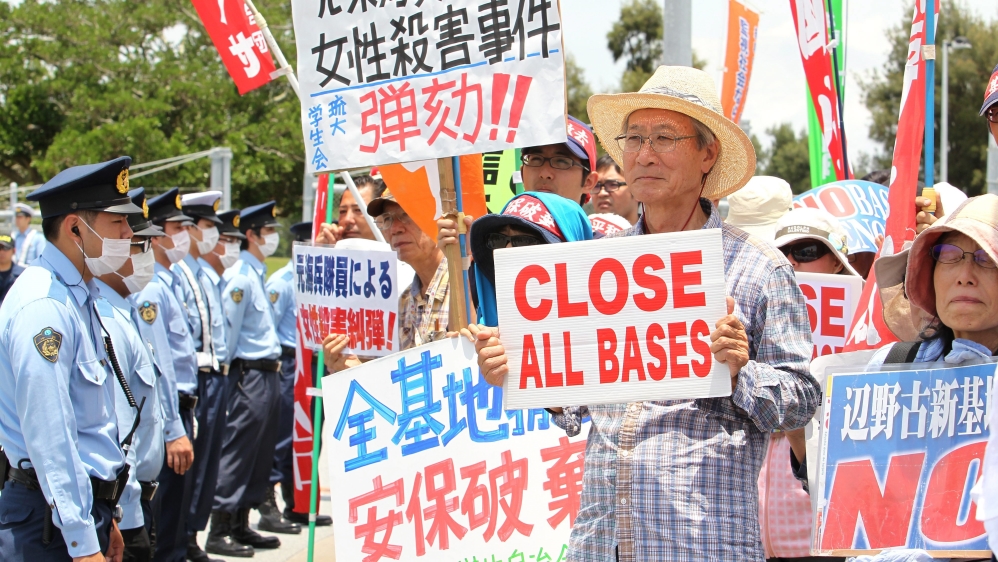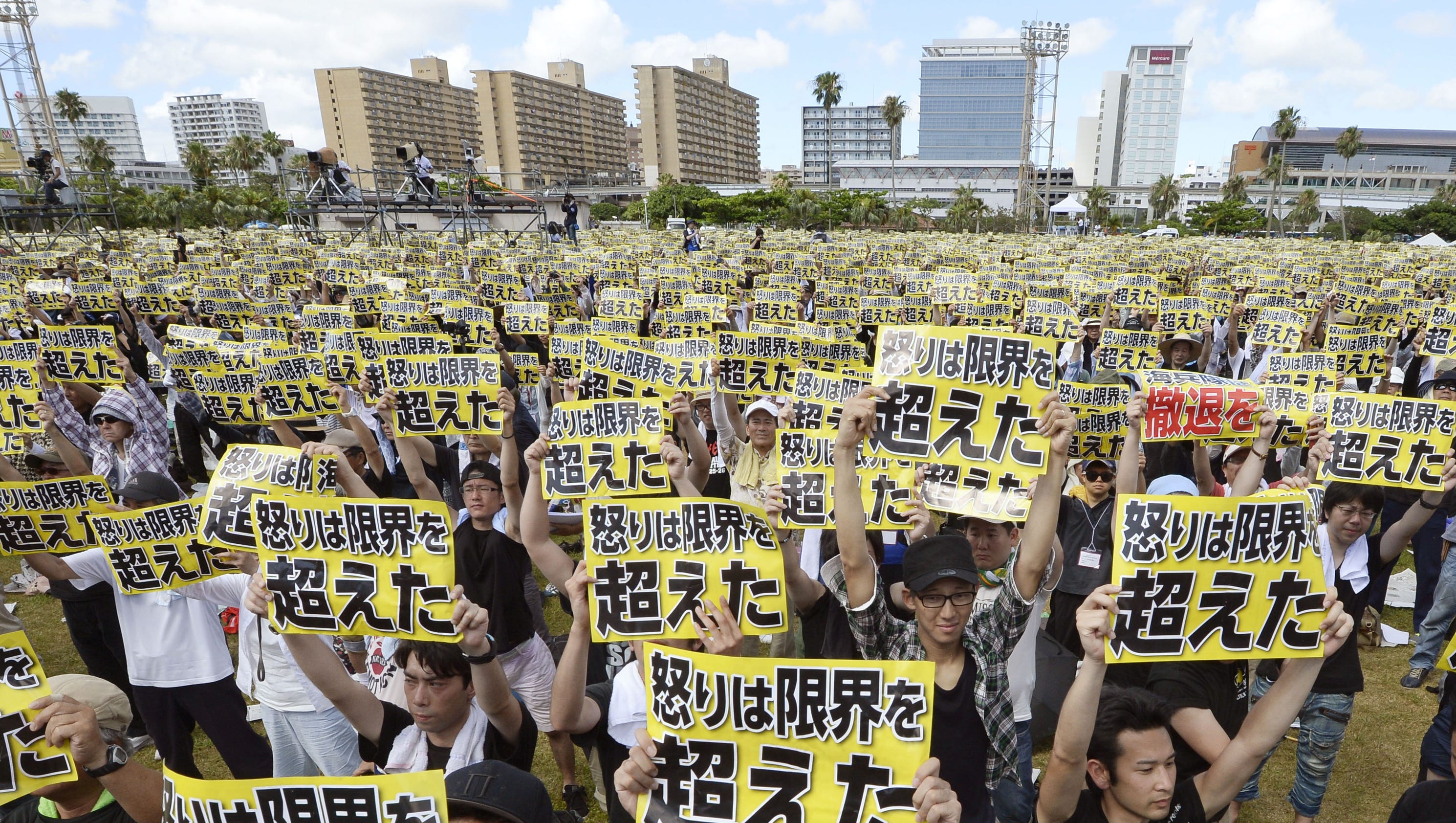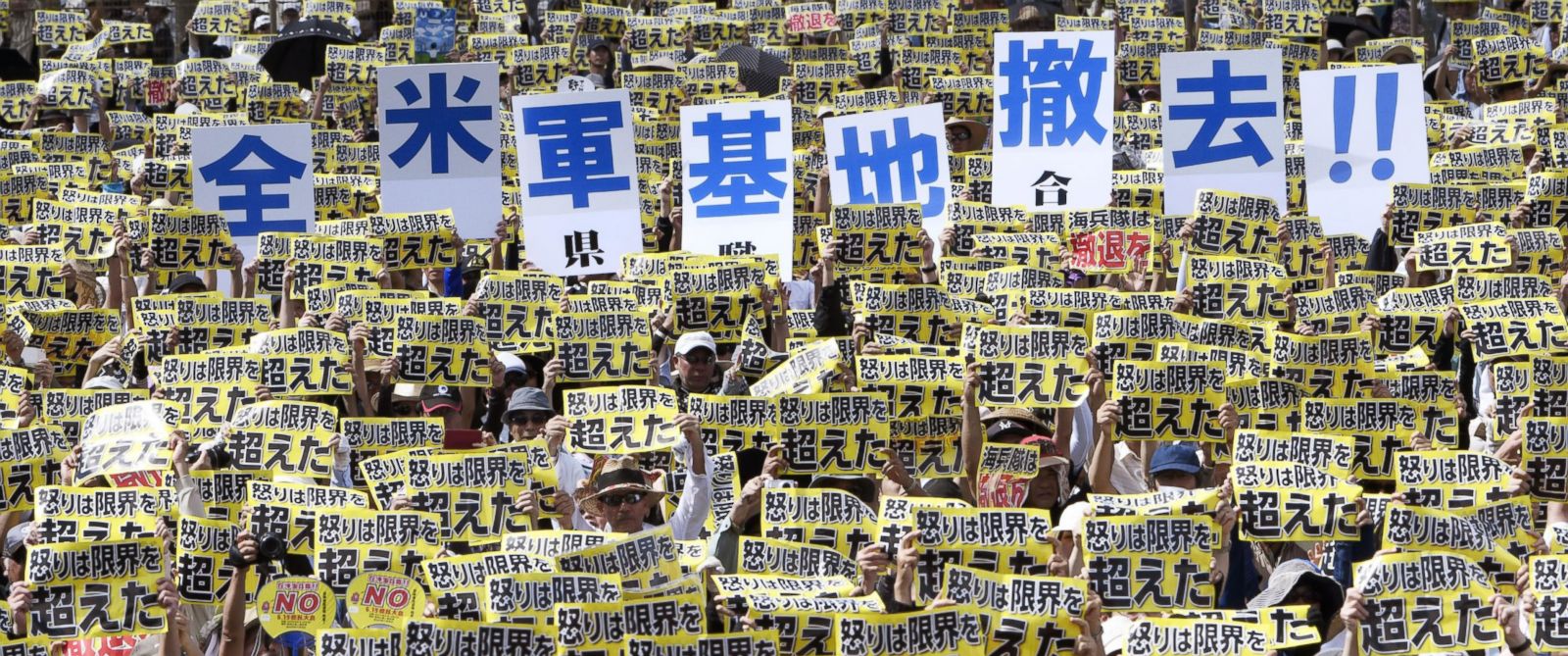
Karen Smith / The Slingshot Collective
OKINAWA (October 12, 2020) — ‘That would be 500 yen’ uttered the 20-something surfer with a ‘naicha’ (Okinawan for mainland Japanese) accent demanding that our family pay for parasols at Nakagusuku beach on Miyakojima Island, where my family on my mother’s side come from.
I will never forget that moment; the look of shock on my mother and my second-aunt’s faces. The beach that they once knew to be untouched was now rammed with tourists and litter scattered everywhere. A hipster from the mainland peddling parasols and snorkeling gear from the back of his VW Van seemed to have claimed that space as his own to commodify.
I thought going back to Miyakojima would cleanse my eyes and ears, tired and sore from the noise of fighter jets and the hideous display of US military bases on Okinawa’s main island. Instead, I saw more of the juxtaposed landscape of pristine nature and militarism present on the main island.
Military trucks and bulldozers passed by, on their way to clear lands for housing complexes and stations for the Japanese Army. They were adorned with the Imperial Japanese flag, a painful reminder of Japan’s fascist past, but also a real reminder that Japan has not moved on but backwards, into the terrifying reality that many still live to remember, including my grandparents.
Formerly known to the Chinese as the ‘country of courtesy’ the Ryukyu Kingdom (now Okinawa), are a group of islands that had its own bustling economy and served as an important trade route between Southeast and East Asian countries. Made up of 150 islands — 60 of which are uninhabited— [each has] various traditions, customs and languages that are distinct from one another, but all share the Okinawan spirit omnipresent across the archipelago.
Purveyors of diplomacy and peaceful inter-state trading, the Ryukyu Kingdom was an empire in its own right.

The Annexation of the Ryukyus
The Kingdom of the Ryukyus was subsequently annexed in 1879, during the Meiji Restoration, and became Okinawa prefecture. This, however, did not mean Okinawans were now Japanese, instead mere colonial subjects of Imperial Japan. My grandmother often recalls how she had to wear a ‘Hogen Fuda,’ a heavy slab of wood around her neck as a punishment for speaking in Miyako. Ryukyuans, Ainus, Africans, and Taiwanese, were among the many indigenous people put on display at Imperial Japan’s ‘Human Pavilion’ (Human Zoo) held in Osaka in 1903.
Fast-forward to World War 2: Okinawa was used as a buffer to fend off American forces attacking the mainland. To instill fear of the US and foster allegiance to Imperial Japan, the Japanese Army convinced up to 700 people — from children to the elderly — to commit mass suicide. The lives of one-third of the total population were lost to the war and rendered 90% of the population homeless.
The Shuri Castle — once home to the Ryukyu Dynasty — was burnt to rubble. These memories are some that haunt people like my grandmother, who understandably still cannot speak about them.
Japan ‘sacrificed’ Okinawa not once, but twice. As part of Japan’s post-war peace process, full administration of Okinawa was given to the US. Being under US authority, Okinawa was excluded from Japan’s post-War constitution as well as the US obligation to guarantee human rights, as it was not formally part of the US.

A Betrayal of the Okinawa People
27 years of US occupation was fraught with human rights abuses against the locals with Agent Orange even being tested out as Okinawa was used as a base for the US’ brutal war in Vietnam. After enduring 27 years of injustice, hoping that under Japan’s rule life would get better, Japan yet again betrayed the Okinawan people.
Currently, Okinawa holds over 70% of Japan’s US military bases but accounts for a total of just 0.6% of Japan’s total landmass. Our rainforest continues to serve as a ‘Jungle Warfare’ training centre for the US military.
The gang-rape of a 12-year old schoolgirl by US servicemen in 1995 prompted a referendum a year later, on the future of US military bases in Okinawa. An overwhelming majority of 89% voted against it, but the central government [was] not legally obligated to respect the result.
Ignoring referendums are a regular occurrence. In February 2019, another referendum against another military base was ignored. The most devastating part of this is the fact that the new base is being built on Henoko Bay, home to two coral reefs, 300 endangered species, and to the near-extinct Dugong, which will all be destroyed in the name of ‘security.’
New Leadership, Same Path
In June 2020, the Japanese Prime Minister and openly fascist Shinzo Abe stepped down from his role, citing health concerns. Abe, the longest-serving leader in Japan’s history, had no shame in openly discussing his ambitions to revert Japan to its Imperial Wartime state. He was dedicated to denying important facts in Japan’s political history, such as Japan’s use of sex slaves and the forced mass suicides of Okinawan people during WW2.
Abe’s successor, Yoshihide Suga, has vowed to continue Abe’s policies into the future, meaning very little change on issues such as US militarism and cultural and ecological preservation in Okinawa.

Okinawa’s Continuing Resistance
But regardless of politics, one thing that has remained constant is the Okinawan will and drive to ensure that their culture and their right to self-determination is never forgotten.
Unlike in the mainland, Okinawans refuse to sing the Imperial Japan Anthem, and the cultural dance ‘Eisa’ remains a mainstay of the high-school experience for Okinawan youth.
Protests outside US military bases are common in Okinawa. The majority of demonstrators are elderly Okinawans who remember the sordid, painful history of US militarism in their land.
Expressing too much dissent in Japan can have harsh consequences and is heavily frowned upon, but campaign groups such as No Base Henoko as well as the vibrant, active Okinawan community in Hawai’i are dedicated to shedding light on an issue that is seldom put on the international agenda.
In the words of Franz Fanon, the immobility of the native is condemned, unless they put an end to their colonization. Perhaps that is why Japan does everything possible to veto any efforts made by Okinawans and refuses to recognize us as indigenous, as that would automatically give us the legal right to claim back the lands that were forcibly taken from us.
Whilst the free movement of people remains a heavily scrutinized and over-reported topic, the free movement of nuclear weapons, military bases and overworked foreign workers across islands in the Asia-Pacific such as Okinawa goes widely underreported.
Absence of the voices of Okinawans as well as Chamorros, Nauruans and Hawaiians are the reason why indigenous futures remain uncertain and are close to being pushed over the precipice of fascism and climate devastation.
Posted in accordance with Title 17, Section 107, US Code, for noncommercial, educational purposes.